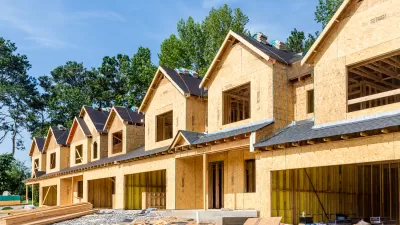With about 353 tourists per resident in the historic city center of Venice, many residents are fleeing the crowds and moving onto the mainland, making the city a "monument-attraction," rather than a viable living space.
As Marilena Mela writes for Global Site Plans, Italy is known for its stunning landscapes, rich culture, and mild climate, drawing about 46 million visitors every year. In many of the art cities featuring prominent works by influential artists, the influx of tourists in recent years is leading to a reevaluation of the tourism industry's benefits.
These visitors, many who are day-trippers or cruise-goers, "take a quick look at the canals and narrow roads, and return to their ship without contributing to the city’s economy. The touristic invasion, in combination with the flooding problem that continues to worsen, has led to an abandonment of the city center." Indeed, compared to other Italian cities, Venice and Rome host the greatest number of tourists, and a recent study by Sapienza Univeristy of Rome found “that the authentic character of the city is in danger of alteration, due to low quality facilities that represent a 'fast' tourism." In addition, "the overcrowding of the city center of Florence by tourists also seems to be a constant cause of stress for its inhabitants, as indicated by a 2012 study published in the journal Tourism Geographies."
With these impacts from tourism in mind, how can urban planners and architects use policies to minimize the detrimental affects and protect, but still showcase, historic cities?
Thanks to Renée van Staveren for the heads up.

Pennsylvania Mall Conversion Bill Passes House
If passed, the bill would promote the adaptive reuse of defunct commercial buildings.

Planning for Accessibility: Proximity is More Important than Mobility
Accessibility-based planning minimizes the distance that people must travel to reach desired services and activities. Measured this way, increased density can provide more total benefits than increased speeds.

Fair Housing Cannot Take a Back Seat to ‘Build, Baby, Build’
If we overlook fair housing principles in the plan to build US housing back better, we risk ending up right back where we started.

LA Metro Board Approves New 710 Freeway Plan
The newest plan for the 710 corridor claims it will not displace any residents.

Austin’s Proposed EV Charging Rules Regulate Station Locations, Size
City planners say the new rules would ensure an efficient distribution of charging infrastructure across the city and prevent an overconcentration in residential areas.

Making California State Parks More Climate-Resilient
A recently released report offers recommendations for keeping state parks healthy and robust, including acquiring additional land for conservation and recreation.
City of Costa Mesa
Licking County
Barrett Planning Group LLC
HUD's Office of Policy Development and Research
Mpact Transit + Community
HUD's Office of Policy Development and Research
Tufts University, Department of Urban and Environmental Policy & Planning
City of Universal City TX
ULI Northwest Arkansas
Urban Design for Planners 1: Software Tools
This six-course series explores essential urban design concepts using open source software and equips planners with the tools they need to participate fully in the urban design process.
Planning for Universal Design
Learn the tools for implementing Universal Design in planning regulations.
























